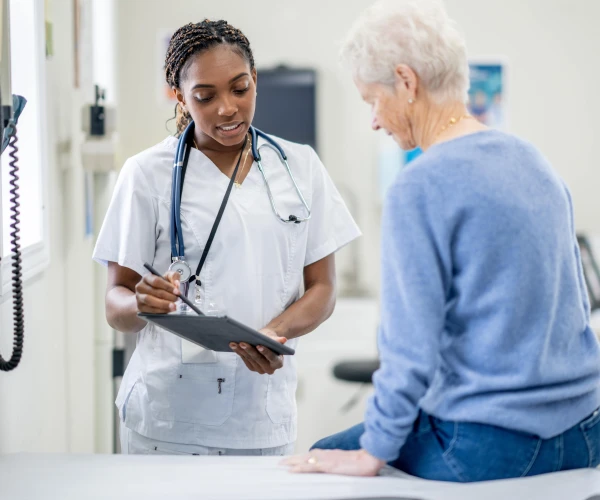
Illnesses and conditions
Stroke
Are you having a stroke?
A stroke happens to someone every 40 seconds. Every four minutes, someone dies from a stroke, and it is the fifth leading cause of death in the U.S. It is also the leading cause of adult disability in the nation.
What is a stroke?
A stroke occurs when the blood flow to an area of the brain is cut off. Brain cells are deprived of oxygen and begin to die. Any abilities controlled by the affected area of the brain are lost, including memory and muscle control.
The level of impact of a stroke depends on its location and the amount of damage caused.
A person’s entire side may be permanently paralyzed by a major stroke, and they may lose the ability to speak.
A minor stroke may only create small problems like a temporary weakness of an arm or leg.
Some people recover completely from a stroke, but about two-thirds of those surviving a stroke will have some disability.
Warning Signs
If you or someone around you suffers a sudden, severe headache with no other cause, immediately followed by loss of consciousness or passing out, call 911.
Severe, sudden headaches followed by unconsciousness indicate a stroke due to bleeding rather than a clot.
When to call 911
If you have any of these warning signs or symptoms or observe them in someone else, call 911 immediately.
Is your face, arm or leg numb on one side of your body?
Did you suddenly lose vision, strength, sensation or coordination?
Are you having difficulty speaking or understanding speech?
Are the symptoms becoming worse over time?
Other symptoms that warrant a call to 911 include:
Sudden vision dimness, especially in one eye.
Loss of balance, possibly with nausea, vomiting, fever, hiccups or trouble swallowing.
Brief loss of consciousness.
Unexplained dizziness or sudden falls.
Up to 80% of strokes are preventable. Regular visits to your primary healthcare provider to monitor your blood pressure, blood chemistry, and weight can identify some of the common health issues leading to stroke.
Types of stroke
Hemorrhagic stroke – a weakened blood vessel in the brain leaks or an aneurysm bursts. This is the least common of the two types of stroke but is most likely to result in death.
Ischemic stroke – a blood vessel carrying blood to the brain is blocked by a blood clot (ischemia).
TIA (Transient Ischemic Attack) – When blood flow to part of the brain stops temporarily. A TIA mimics a stroke, and symptoms can appear and last less than 24 hours.
If you think you or a family member has suffered or is suffering a stroke, call 911 or visit Virginia Mason Franciscan Health Emergency & Urgent Care. Our staff is fully equipped to handle your symptoms with on-site labs, X-rays, ultrasound and CT scans, all under one roof.
Don't delay your care
We're here to help with 24/7 emergency care and urgent care from 7 a.m. - 9 p.m., all under one roof. No appointment is necessary — just walk in!